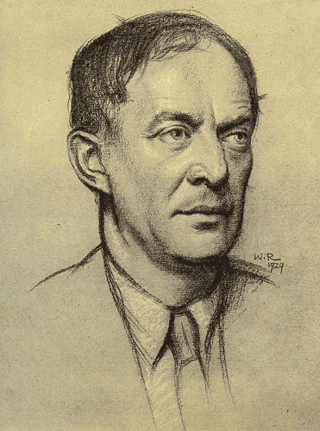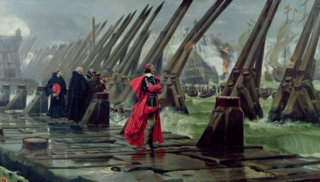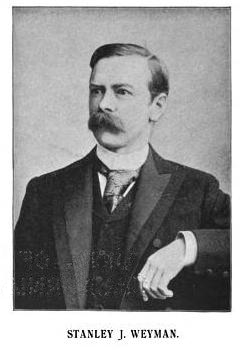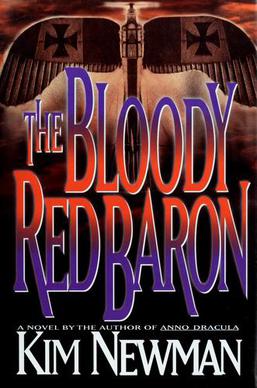Related Research Articles

Captain Robert von Ranke Graves was an English poet, soldier, historical novelist and critic. His father was Alfred Perceval Graves, a celebrated Irish poet and figure in the Gaelic revival; they were both Celticists and students of Irish mythology.

Siegfried Loraine Sassoon was an English war poet, writer, and soldier. Decorated for bravery on the Western Front, he became one of the leading poets of the First World War. His poetry both described the horrors of the trenches and satirized the patriotic pretensions of those who, in Sassoon's view, were responsible for a jingoism-fuelled war. Sassoon became a focal point for dissent within the armed forces when he made a lone protest against the continuation of the war with his "Soldier's Declaration" of July 1917, which resulted in his being sent to the Craiglockhart War Hospital. During this period, Sassoon met and formed a friendship with Wilfred Owen, who was greatly influenced by him. Sassoon later won acclaim for his prose work, notably his three-volume, fictionalised autobiography, collectively known as the Sherston trilogy.

Wilfred Edward Salter Owen MC was an English poet and soldier. He was one of the leading poets of the First World War. His war poetry on the horrors of trenches and gas warfare was much influenced by his mentor Siegfried Sassoon and stood in contrast to the public perception of war at the time and to the confidently patriotic verse written by earlier war poets such as Rupert Brooke. Among his best-known works – most of which were published posthumously – are "Dulce et Decorum est", "Insensibility", "Anthem for Doomed Youth", "Futility", "Spring Offensive" and "Strange Meeting". Owen was killed in action on 4 November 1918, a week before the war's end, at the age of 25.

Memoirs of a Fox-Hunting Man is a novel by Siegfried Sassoon, first published in 1928 by Faber and Faber. It won both the Hawthornden Prize and the James Tait Black Memorial Prize, being immediately recognised as a classic of English literature. In the years since its first appearance, it has regularly been a set text for British schoolchildren.

Louis XIII was King of France from 1610 until his death in 1643 and King of Navarre from 1610 to 1620, when the crown of Navarre was merged with the French crown.

Armand Jean du Plessis, 1st Duke of Richelieu, known as Cardinal Richelieu, was a French Catholic statesman and prelate who had an outsize influence in civil and religious affairs. He became known as l'Éminence Rouge, a term derived from the title "Eminence" applied to cardinals and their customary red robes.
John Dickson Carr was an American author of detective stories, who also published using the pseudonyms Carter Dickson, Carr Dickson, and Roger Fairbairn.

Dame Edith Louisa Sitwell was a British poet and critic and the eldest of the three literary Sitwells. She reacted badly to her eccentric, unloving parents and lived much of her life with her governess. She never married but became passionately attached to Russian painter Pavel Tchelitchew, and her home was always open to London's poetic circle, to whom she was generous and helpful.

Walter John de la Mare was an English poet, short story writer and novelist. He is probably best remembered for his works for children, for his poem "The Listeners", and for his psychological horror short fiction, including "Seaton's Aunt" and "All Hallows". In 1921, his novel Memoirs of a Midget won the James Tait Black Memorial Prize for fiction, and his post-war Collected Stories for Children won the 1947 Carnegie Medal for British children's books.

The Siege of La Rochelle was a result of a war between the French royal forces of Louis XIII of France and the Huguenots of La Rochelle in 1627–1628. The siege marked the height of the struggle between the Catholics and the Protestants in France, and ended with a complete victory for King Louis XIII and the Catholics.

Stanley John Weyman was an English writer of historical romance. His most popular works were written in 1890–1895 and set in late 16th and early 17th-century France. While very successful at the time, they are now largely forgotten.

Day of the Dupes is the name given to a day in November 1630 on which the enemies of Cardinal Richelieu mistakenly believed that they had succeeded in persuading King Louis XIII of France to dismiss Richelieu from power. The incident is thought to have occurred on the 10th, 11th, or 12th of that month.

Micah Clarke is a historical adventure novel by British author Arthur Conan Doyle, published in 1889 and set during the Monmouth Rebellion of 1685 in England. The book is a bildungsroman whose protagonist, Micah Clarke, begins as a boy seeking adventure in a rather romantic and naive way, falls under the influence of an older and vastly experienced, world-weary soldier of fortune, and becomes a grown up after numerous experiences, some of them very harrowing. At the conclusion he must go into exile as a hunted outlaw, becomes a soldier of fortune himself and is launched on lifetime military career. In the process the book also records much of the history of the Monmouth Rebellion, from the point of view of someone living in 17th century England.

Traditionally, the canon of Sherlock Holmes consists of the 56 short stories and four novels written by Sir Arthur Conan Doyle. In this context, the term "canon" is an attempt to distinguish between Doyle's original works and subsequent works by other authors using the same characters. Usually capitalized by fans of the Sherlockian game as "the Canon", the description of these 60 adventures as the Sherlock Holmes canon and the game of applying the methods of "Higher Criticism" to it was started by Ronald Knox as a playful use of the traditional definition of canon as an authoritative list of books accepted as holy scripture.

Anno Dracula: The Bloody Red Baron, or simply The Bloody Red Baron, is a 1995 alternate history/horror novel by British author Kim Newman. It is the second book in the Anno Dracula series and takes place during the Great War, 30 years after the first novel.

The Refugees (1893) is a historical novel by British writer Sir Arthur Conan Doyle.

Under the Red Robe is a 1937 British-American historical adventure film directed by Victor Sjöström and starring Conrad Veidt, Annabella and Raymond Massey. Previously filmed as a 1923 silent directed by Alan Crosland. Before the films a play had been produced on Broadway in 1896-97 starring Viola Allen and William Faversham. The film is based on the 1894 novel by Stanley J. Weyman and is set during the religious wars of early 17th century France; events in the novel itself means it can be dated to the autumn of 1630.

Under the Red Robe is a 1923 American silent historical drama film directed by Alan Crosland based upon the Stanley Weyman novel Under the Red Robe. The film marks the last motion picture appearance by stage actor Robert B. Mantell who plays Cardinal Richelieu and the only silent screen performance of opera singer John Charles Thomas.
Under the Red Robe may refer to:
Under the Red Robe is a 1915 British silent historical film directed by Wilfred Noy. An adventure story set in the era of Cardinal Richelieu, it is based on the novel of the same name which was turned into two later films including Undthe Red Robe (1937).
References
- ↑ Tellers of Tales by Roger Lancelyn Green, 1946, Edmund Ward (p. 175 of the 1964 reprint) - Green quotes Conan Doyle and Stevenson.
- ↑ Sassoon, Siegfried (1986). The Old Century: and Seven More Years. Faber and Faber. ISBN 0571139604.
- ↑ Noy, Wilfred, Under the Red Robe (Adventure, Drama), Owen Roughwood, Dorothy Drake, Jackson Wilcox, Clarendon, retrieved 25 June 2023
- ↑ Under the Red Robe (1923) at the Internet Movie Database
- ↑ "Under the Red Robe 1937". Imdb.